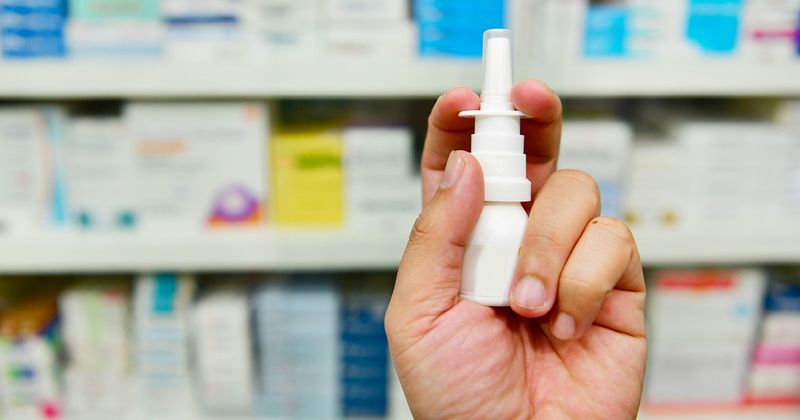Zavegepant nasal spray linked to higher likelihood of pain freedom at 2 hours
Key takeaways:
- Zavegepant is the first FDA-approved intranasal treatment for migraine.
- Treatment with 10 mg zavegepant offered higher pain freedom at 2 hours post dose compared with placebo.
DENVER — Treatment with 10 mg zavegepant nasal spray was associated with a higher likelihood of pain freedom compared with placebo at 2 hours post dose, according to a presentation at the American Academy of Neurology annual meeting.
“Zavegepant, a third generation small-molecule [calcitonin gene-related peptide] antagonist, is the first intranasally administered option and was recently approved by the FDA,” Mainak Bardhan, MD, research associate at Miami Cancer Institute, part of Baptist Health South Florida, and colleagues wrote. “This highly selective and potent competitive antagonist possesses remarkable aqueous solubility, making it suitable for nasal delivery, and demonstrates excellent oxidative stability.”

Bardhan and colleagues sought to evaluate the safety and efficacy of zavegepant (Zavzpret, Pfizer), administered as a nasal spray for the acute treatment of migraine attacks.
They conducted a literature review across multiple databases to identify relevant randomized clinical trials, yielding two with a total of 2,850 participants. An additional clinical trial was included for qualitative synthesis.
The primary efficacy outcome for the studies was freedom from pain at 2 hours post-dose. The researchers evaluated safety outcomes based on adverse events (AEs), with zavegepant 10 mg and placebo groups compared for incidence of AEs.
According to results, treatment with zavegepant 10 mg exhibited a significantly higher likelihood of achieving freedom from pain at 2 hours post-dose compared with placebo (RR = 1.54; 95% CI: 1.28-1.84).
Zavegepant 10 mg also demonstrated superior freedom from the most bothersome symptoms at 2 hours post-dose compared with placebo (RR = 1.26; 95% CI: 1.13-1.42). Researchers noted, however, that those in treatment groups experienced a higher incidence of adverse events compared with those given placebo (RR = 1.78; 95% CI: 1.5-2.12), with dysgeusia being the most reported AE.
“This provides compelling evidence that zavegepant is an effective acute treatment option for migraine,” Bardhan and colleagues wrote. “Real-world studies are needed to confirm the efficacy, tolerability and safety in clinic-based settings consisting of heterogeneous patient populations.”
Editor's note: This story was amended on May 17, 2024 to update Bardhan's title.

